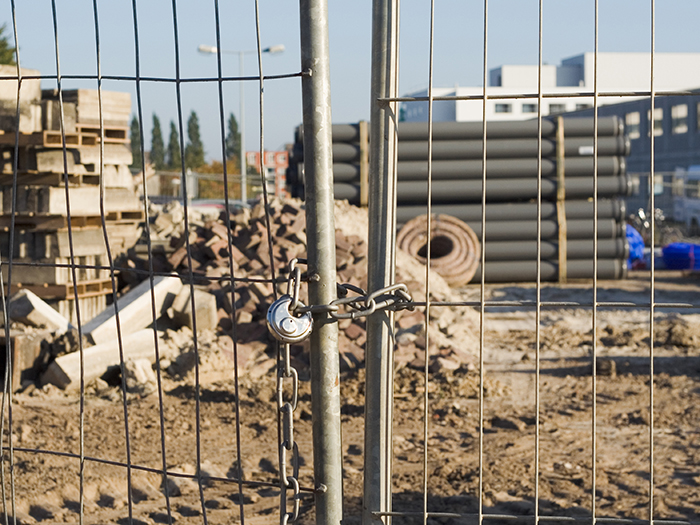Insuring the Climate Transition: As ESG Concerns Drive Investment in Renewables, Project Safety and Resiliency Are Paramount

Last July, four workers lost their lives in the South China Sea while working to construct the Huizhou Gangkou I wind farm. The workers were on a wind turbine installation vessel that had been converted from an offshore jack-up rig. When it tilted dangerously, they fell into the sea and drowned, per reports from the maritime industry publication GCaptain.
Also in July 2021 and again in the South China Sea, another 12 workers drowned when the offshore wind installation vessel they were on sank, the trade publication Upstream Energy Explored reported.
These accidents are tragedies. Taken together, they illustrate the importance of making sure that renewable energy sources are safe and reliable.
As this series has mentioned before, we’re entering a critical decade in terms of preventing the worst effects of global climate change. Society as a whole needs to build more clean energy infrastructure, source more of its energy from renewables and reach net-zero emissions by 2050 in order to maintain its current quality of life.
The good news? Companies are starting to increase their investments in renewable energy projects.
Last year, $755 billion in global spending went towards projects related to the climate transition, Bloomberg reported. Driven by increased corporate awareness of ESG concerns and new tax incentives, it’s likely that even more money could be spent on these projects in the coming years.
If these efforts aren’t carried out safely and reliably, however, it could delay the transition. Businesses need to ensure they’re emphasizing safety best practices when it comes to constructing renewable energy assets like wind farms or generating hydrogen fuel cells. These new energy sources also need to be resilient against severe weather events, which are likely to only become more common over the next few years.
“Companies who are transitioning to clean energy or are looking to reduce emissions need to understand it’s honestly not a one-stop solution,” said Vilma Vanegas, energy and marine lead and insurance broker and consultant with NFP.
ESG Factors and Tax Incentives Drive Increased Renewable Investment
Environmental, social and governance (ESG) has become a bit of a buzzword in recent years. The term refers to companies making an effort to define success in terms of social and environmental impact, in addition to good governance and revenues. ESG concerns within the energy sector have, in part, driven investments in renewables, Vanegas said.
In a rarity, corporate concerns over ESG and government policies are intersecting. Tax credits and other incentives to spur renewable energy developments in the Inflation Reduction Act are working alongside ESG to increase investment in these areas. “There’s a natural synergy between tax credits and ESG concerns,” Vanegas said.
The Inflation Reduction Act has extended the 30% investment tax credit for solar and other renewable and clean energy projects to 2024. It’s also created a number of other incentives for businesses to undertake clean energy projects, Reuters reported.
Renewables aren’t the only type of decarbonization project getting increased attention due to tax incentives. Carbon sequestration projects — where industrial facilities capture their carbon emissions, liquify them and store them permanently in the earth — are also becoming more popular.
“These regulatory tools are helping revitalize the carbon capture utilization and storage projects,” Vanegas said.
Safety Considerations Must Lead Clean Energy Investments
The accidents caused by on- and offshore wind farms during the early 2000’s are just one example of why renewable energy projects need to consider safety.
Thousands of accidents occurred from fires started by overheated propellers, rotor blade tips getting ripped off by wind and structural fractures, the New York Times reported in 2007.
Offshore wind farms have caused maritime accidents, including collisions. In 2019, 865 maritime accidents occurred in offshore wind farms, per research published in the Journal of Marine Science and Engineering.
“There was such a high demand for offshore wind that people just jumped into it,” Vanegas said.
Government subsidies allowed wind to rapidly grow into a billion dollar industry; energy companies invested too quickly without enough testing. Now, these same industries will want to ensure that they are working safely as they invest in future clean energy projects, to avoid the same mistakes.
Some have already started improving their safety practices. Ahead of the construction of Vineyard Wind, the U.S.’ first commercial-scale offshore wind farm, The Massachusetts Maritime Academy is working to educate workers on fall protection, sea survival and other critical skills for working both at sea and hundreds of feet in the air, the A.P. reported.
Another area where investors need to carefully consider safety risks is hydrogen fuel cells.
Pollution and CO2 free, hydrogen can be harnessed and used to generate electricity, heat and other forms of energy using fuel cells. Basically, the cells combine hydrogen and oxygen to generate energy.
Aviation, manufacturing and trucking are just a few industries that could use hydrogen fuel cells to reduce carbon emissions and power vehicles.
The Inflation Reduction Act includes tax credits for hydrogen production, which are expected to result in $3 billion of annual investments in the technology by 2030, Yale Climate Connections reported.
While hydrogen fuel cells have a number of advantages — especially when it comes to the fight against climate change — they can also be dangerous if they’re not handled and implemented safely. Hydrogen is a highly flammable and explosive gas. If it’s not managed carefully, these tools could cause dangerous accidents.
Vanegas said that so far investments in projects like offshore wind, solar and other renewable energy sources have been proceeding at a safe and scalable rate. She cautions energy companies and project investors to ensure they’re carefully analyzing the safety risks that come with each project.
The increased importance of ESG in the boardroom and a host of new tax incentives may be enticing, but if projects aren’t carried out carefully it could, literally, blow up in investors faces. These investments are necessary to stop climate change. If they’re not carried out safely, however, the public could become fearful of these technologies, prolonging the use of fossil fuels.
“ESG is not a checkbox exercise,” Vanegas said. “This will require commitment from management and investors to fully succeed.”
Transition to Renewables Requires Infrastructure Investments
Safety is paramount to the success of renewable energy projects, but ensuring those systems are reliable and able to stand up to severe weather is equally important.
“We’re starting to strain already vulnerable systems. There has been an under investment in infrastructure, and now the systems are reaching the end of their lifespans,” Vanegas said.
Take electric cars for instance. By 2050, national electricity consumption is expected to increase by 38%, largely because of electric vehicles, Pew reported in 2020. There’s some fear this increased usage will overwhelm shoddy state power grids.
The risk of severe weather events knocking out power sources is another concern with renewables since “the vulnerability of renewable energy assets to weather events is far higher than for traditional power generation assets,” explained Patrick Hauser, head of energy property North America, Swiss Re Corporate Solutions.
Over the last few years, extreme weather events caused massive losses running to the hundreds of millions of dollars for the renewable energy sector, according to a recent report from GCube Insurance.
“Since the U.S. scaled up renewable energy assets across the country, various large losses happened due to hailstorms, named windstorms and also wildfire,” Hauser said.
“Underwriters now apply limits for weather-related loss and are asking for higher deductibles and higher premium[s].”
Either way, renewables will not survive without insurance. Some carriers may become wary of renewables, while others are turning to parametric solutions to provide coverage for these critical assets.
“While there is excess capacity available in the market, non-traditional cover such as parametric solutions have come into play,” Hauser said.
“Lenders want to protect their assets and returns and as such clients are looking for additional capacity for hail or other related perils.” &
Insuring the Climate Transition is a series that explores the critical role insurance will play in decarbonizing the economy and helping insureds adapt to the effects of global climate change. You can read other stories in the series here.










